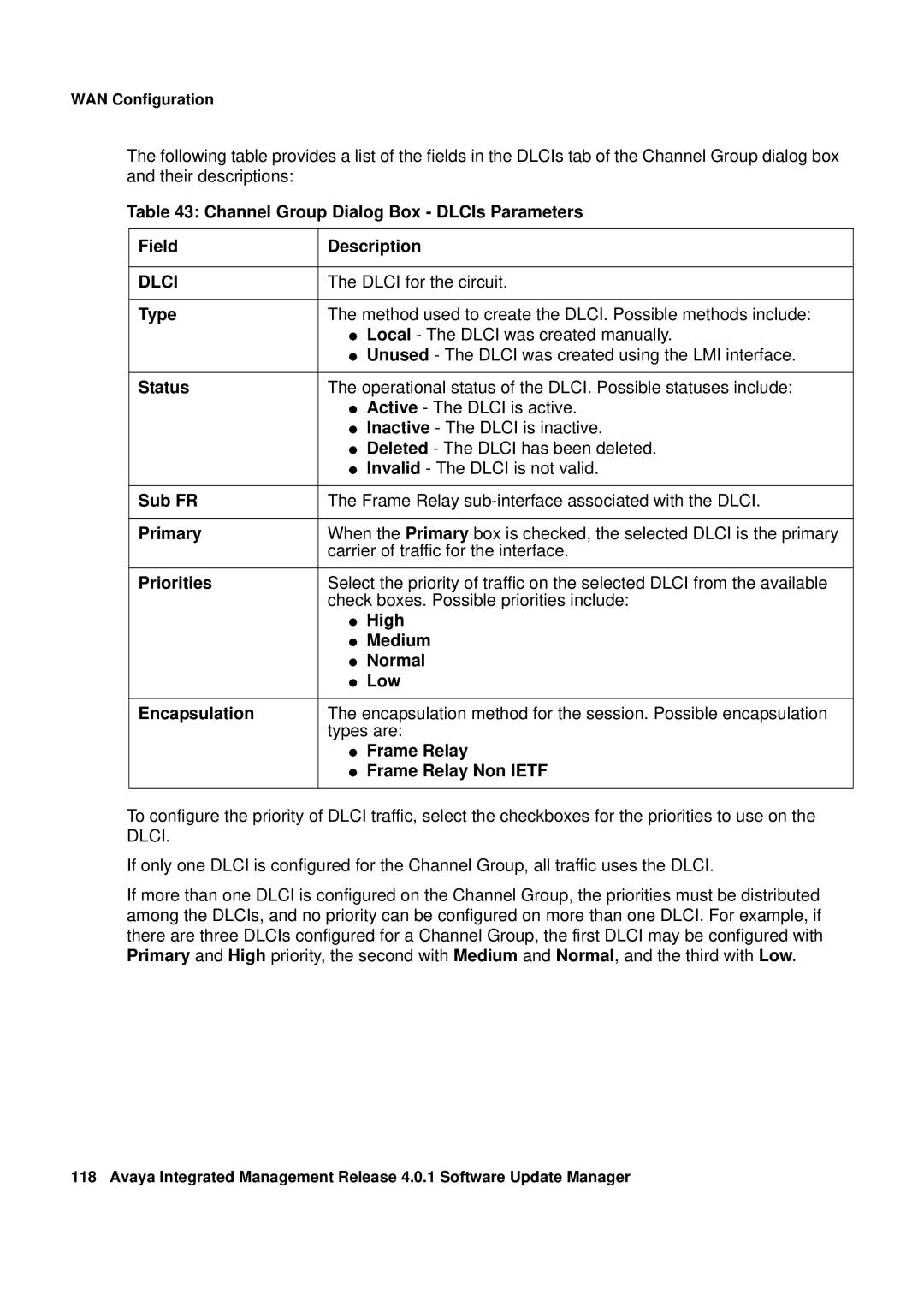WAN Configuration
The following table provides a list of the fields in the DLCIs tab of the Channel Group dialog box and their descriptions:
Table 43: Channel Group Dialog Box - DLCIs Parameters
Field | Description |
|
|
DLCI | The DLCI for the circuit. |
|
|
Type | The method used to create the DLCI. Possible methods include: |
| ● Local - The DLCI was created manually. |
| ● Unused - The DLCI was created using the LMI interface. |
|
|
Status | The operational status of the DLCI. Possible statuses include: |
| ● Active - The DLCI is active. |
| ● Inactive - The DLCI is inactive. |
| ● Deleted - The DLCI has been deleted. |
| ● Invalid - The DLCI is not valid. |
|
|
Sub FR | The Frame Relay |
|
|
Primary | When the Primary box is checked, the selected DLCI is the primary |
| carrier of traffic for the interface. |
|
|
Priorities | Select the priority of traffic on the selected DLCI from the available |
| check boxes. Possible priorities include: |
| ● High |
| ● Medium |
| ● Normal |
| ● Low |
|
|
Encapsulation | The encapsulation method for the session. Possible encapsulation |
| types are: |
| ● Frame Relay |
| ● Frame Relay Non IETF |
|
|
To configure the priority of DLCI traffic, select the checkboxes for the priorities to use on the DLCI.
If only one DLCI is configured for the Channel Group, all traffic uses the DLCI.
If more than one DLCI is configured on the Channel Group, the priorities must be distributed among the DLCIs, and no priority can be configured on more than one DLCI. For example, if there are three DLCIs configured for a Channel Group, the first DLCI may be configured with Primary and High priority, the second with Medium and Normal, and the third with Low.
118 Avaya Integrated Management Release 4.0.1 Software Update Manager
